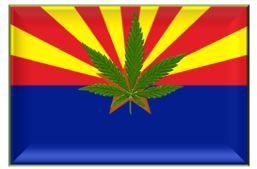By Chris Walsh
The first few days of recreational sales in Washington State were a resounding success by most measures.
The handful of shops that opened this week reported brisk business, national media coverage was largely favorable and consumers were on their best behavior – painting a positive picture of the industry.
But the rollout of recreational sales wasn’t exactly smooth, and overall demand might not be as big as it seems.
Some issues the industry experienced this week:
#1. Edibles: Consumers were unable to buy edibles, as the state didn’t license an infused products company until Wednesday. It’s unclear when the first batch of edibles will be ready, but it could be a while before they’re on store shelves. Edibles are hugely popular in Colorado’s recreational market, so Washington’s cannabis industry is missing out on a sizable source of potential revenue.
#2. Logistics: Just five recreational cannabis stores opened on Tuesday, even though 25 had received their licenses.
Part of this was tied to the last-minute nature of the process: The first licenses were not awarded until Monday, just one day before recreational sales began.
Some shops weren’t able to launch as planned because their supply of cannabis didn’t arrive on time, while others faced delays because they had trouble working with the state’s inventory tracking system. A handful experienced other logistical hiccups.
More stores have opened in recent days – and will in the coming weeks – but very few shops were actually selling cannabis when the market launched.
#3. Inventory: Growers didn’t receive licenses in time to produce enough cannabis to meet initial demand. As a result, some retail stores that were able to open this week are running low on inventory. One shop – Cannabis City in Seattle – is already completely out of stock.
These stores are now having a difficult time finding other growers with supply.
“They are all scrambling right now,” Gregory Stewart with Nine Point Growth Strategies, a licensed cultivation company that has already delivered its entire initial harvest to retail shops, told us this week. “I know some other producers are coming online toward the end of July. Everyone is trying to find a producer right now.”
Aside from these challenges, there are also questions about the market’s size.
Initial demand – while solid – doesn’t appear to be as strong as it was in Colorado, even though Washington has 1.7 million more residents.
Long lines built up in the morning outside the handful of stores to open in Washington on Tuesday, but they had reportedly dissipated by the afternoon. On Wednesday, dozens of people waited outside Seattle’s only retail shop.
In Denver, by comparison, 17 shops opened when rec sales began, and customers had to wait in line as long as five hours. Many were still queued up when stores closed that night.
Long lines formed for several days after as well, with consumers forced to wait several hours. The other dozen or so shops that opened around the state dealt with a huge crush of customers throughout the first week, too.
Of course, Colorado benefited from being the first recreational market in the nation, and the hype certainly helped boost purchases.
 Other factors could be at play too – many consumers in Washington likely wanted to avoid the chaos of the first few days of sales – and longer lines do not necessarily equate to higher demand (it depends on how fast customer transactions are processed, how big the store is, prices, etc.). And given the inventory problems, retail stores might not have been able to handle more customers anyway.
Other factors could be at play too – many consumers in Washington likely wanted to avoid the chaos of the first few days of sales – and longer lines do not necessarily equate to higher demand (it depends on how fast customer transactions are processed, how big the store is, prices, etc.). And given the inventory problems, retail stores might not have been able to handle more customers anyway.
We’ll get a better picture of this in the next couple months as more data become available, but demand remains a question mark.
Regardless, Washington’s recreational industry appears to be on solid footing overall, and many businesses are poised for long-term success. In a few months, the challenges businesses faced will likely be a distant memory.




